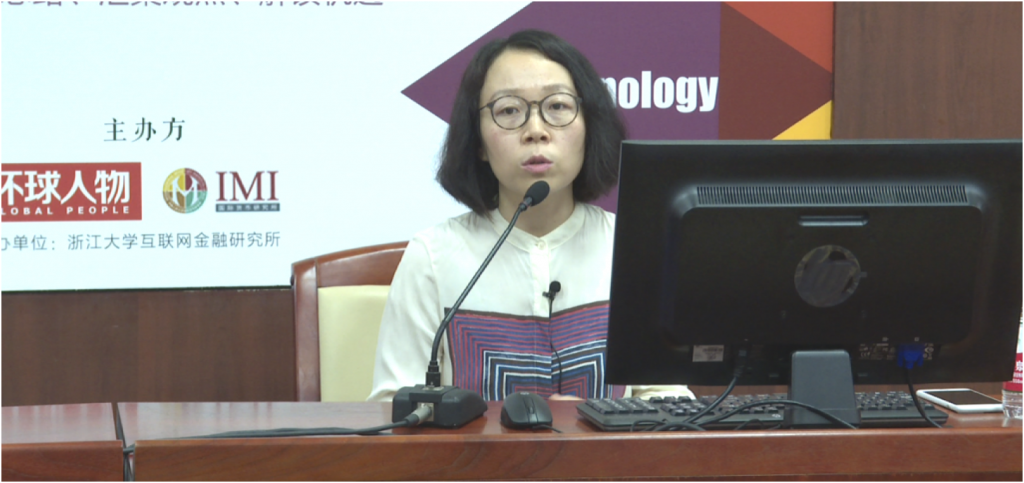Macro-Finance Salon (No. 68) and Fintech Open Classes(No. 8): Fintech Leading Financial Reform
2017-06-22 IMI Ms. Li first reviewed the whole financial sector’s historical background. She pointed out that in recent years, technology and finance have been deeply integrated and the forces of technology and credit are promoting the development of the entire financial market. At present, the competitiveness of the financial industry mainly lies in user experience, risk control, and the cost of capital. Among the three aspects, the risk control ability is the most core ability of financial institutions. With the development of Internet and online consumer finance, the means of risk control and their foundation such as data, systems, models, strategies and other key factors are also undergoing great changes.
In this context, Ms. Li analyzed in detail the development trend and current business forms of consumer finance. She said that technology development has enabled the combination of data and Internet. China’s huge population base and the trend of consumption transformation and upgrade have expanded the consumer market’s potential. Meanwhile, the guidance of the government’s macro policy has been a big driver behind consumer finance’s development. The value of China’s consumer financial market has reached trillions of dollars and the market will grow at a rate of 20 percent every year since 2016, according to official data. Ms. Li believed that consumer finance has many characteristics: it is scene-oriented, data-driven and is becoming an industry. Besides, the platforms for risk control and technology support are undergoing tremendous changes.
In addition to consumer finance, another big direction of Internet finance is supply chain finance. Ms. Li pointed out that the first stage of supply chain finance features the bank-led supply chain financial model. In the second stage, the supply chain finance will be dominated by core enterprises. When it comes to the third stage, supply chain finance tends to reach saturation and the core enterprises will start to hit a ceiling. China is currently in the second stage and its domestic supply chain financial market will continue to grow rapidly in the next few years. The issues to be solved include: how to integrate and connect enterprises’ various data, how to locate the service groups and provide better financial services, and how to manage and control risks.
Ms. Li first reviewed the whole financial sector’s historical background. She pointed out that in recent years, technology and finance have been deeply integrated and the forces of technology and credit are promoting the development of the entire financial market. At present, the competitiveness of the financial industry mainly lies in user experience, risk control, and the cost of capital. Among the three aspects, the risk control ability is the most core ability of financial institutions. With the development of Internet and online consumer finance, the means of risk control and their foundation such as data, systems, models, strategies and other key factors are also undergoing great changes.
In this context, Ms. Li analyzed in detail the development trend and current business forms of consumer finance. She said that technology development has enabled the combination of data and Internet. China’s huge population base and the trend of consumption transformation and upgrade have expanded the consumer market’s potential. Meanwhile, the guidance of the government’s macro policy has been a big driver behind consumer finance’s development. The value of China’s consumer financial market has reached trillions of dollars and the market will grow at a rate of 20 percent every year since 2016, according to official data. Ms. Li believed that consumer finance has many characteristics: it is scene-oriented, data-driven and is becoming an industry. Besides, the platforms for risk control and technology support are undergoing tremendous changes.
In addition to consumer finance, another big direction of Internet finance is supply chain finance. Ms. Li pointed out that the first stage of supply chain finance features the bank-led supply chain financial model. In the second stage, the supply chain finance will be dominated by core enterprises. When it comes to the third stage, supply chain finance tends to reach saturation and the core enterprises will start to hit a ceiling. China is currently in the second stage and its domestic supply chain financial market will continue to grow rapidly in the next few years. The issues to be solved include: how to integrate and connect enterprises’ various data, how to locate the service groups and provide better financial services, and how to manage and control risks.
